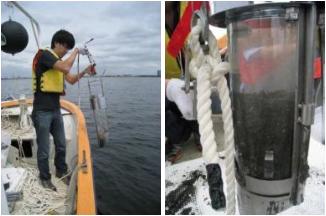What is a Neutron Activation Analysis (NAA) project?
Neutron activation analysis (NAA) is an analytical technique for determining elemental compositions of a large variety of substances. In NAA, samples are irradiated by neutrons. Normally, reactor neutrons are most commonly used. Once elements (more strictly, nuclides) are irradiated by neutrons, activated elements (nuclides) are produced and then become stable with emitting gamma ray, beta-ray and so on. If gamma ray is measured by germanium semi-conductor detector of high energy resolution, samples can be non-destructively analyzed. Such an NAA procedure is called instrumental NAA (INAA) and is acknowledged to be an outstanding analytical procedure because of its non-destructivity and capability of simultaneous determination of multi-elements. INAA is especially effective for solid samples.
The NAA project within the frame of FNCA has been conducted for 9 years. At the beginning, suspended particulate matter (SPM) was targeted for monitoring the air pollution level in participating countries of FNCA. To facilitate the data handling in gamma ray spectrometry, k0 standardization method was aimed to be introduced into all participating country. At present, most countries are using k0 method in addition to a conventional comparison method.
After the cooperative analysis of SPM, which was achieved with great success, marine sedimentary samples was chosen as another target material for monitoring the environment. At present, the NAA project covers geochemical samples, food samples and marine sediments as target materials for exploring mineral resources, assuring safety of food and monitoring the marine environment, respectively.

Sediment sampling at dredging area and the collected sediment cores
|